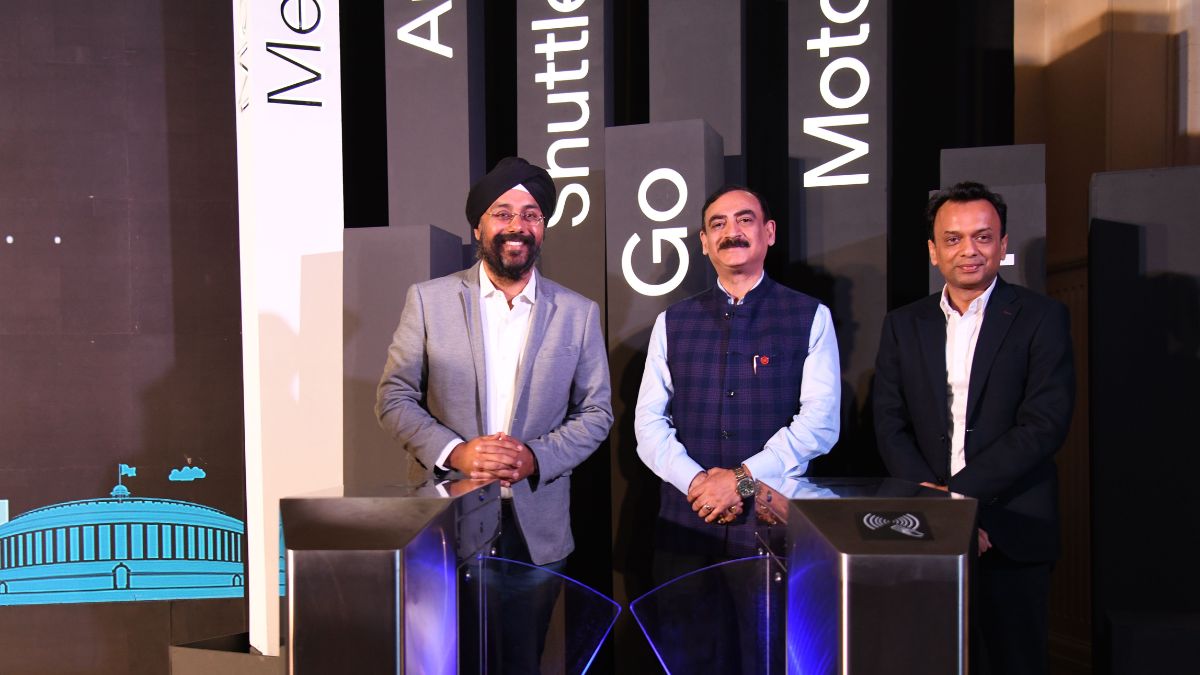Uber-ONDC tie-up: From home via taxi to metro to office, and more
 From Left: Prabhjeet Singh, President, Uber India & South Asia, Dr. Vikas Kumar, MD, Delhi Metro Rail Corporation (DMRC) and Vibhor Jain, acting CEO & COO at ONDC during the tie up buy metro tickets on Uber powered by ONDC | Sanjay Ahlawat
From Left: Prabhjeet Singh, President, Uber India & South Asia, Dr. Vikas Kumar, MD, Delhi Metro Rail Corporation (DMRC) and Vibhor Jain, acting CEO & COO at ONDC during the tie up buy metro tickets on Uber powered by ONDC | Sanjay Ahlawat
Tickets to ride on India’s largest metro system, the Delhi Metro, just got easier, after it onboarded Uber via the government’s e-commerce interface platform ONDC.
The global mobility solutions poster boy’s ambition, though, goes beyond this—to become a seamless provider of all travel solutions, including multimodal solutions that include last-mile connectivity.
“That is what we are aiming at,” Uber India CEO Prabhjeet Singh told THE WEEK, though he declined to give any specific timelines. “We are working on further tech innovations. I am not committing any timelines, but that is the direction we are heading towards.”
“We are fulfilling requirements many of our consumers have articulated,” Singh also added.
The tie-up with ONDC was originally announced last year when Uber’s global head Dara Khosrowshahi visited India. The initial steps in the project are the facility to book tickets on the Delhi Metro via the app and travel using the QR code generated, to be followed shortly with three other metro networks being added. Solutions that incorporate last-mile connectivity will be added as the next step.
Delhi Metro managing director Vikas Kumar also voiced the long-pending demand, for an online facility by which passengers can book both their last-mile connectivity (from the point they are in, say a home or office, to the nearest metro station by cab or auto) and then onward a metro ticket to the final destination (and a further last mile connectivity by cab if required) all together booked seamlessly on the app.
“Door-to-door connectivity will be a great help. (Uber) will be coming up with that shortly,” Kumar announced.
In fact, Uber is also in the process of adding metro ticket bookings from other cities, though Singh declined to divulge which these cities are. “They will be a mix of Tier 1 and Tier 2 cities,” he said.
ONDC, the government’s e-commerce equivalent to what UPI is to digital payment, has been facing myriad issues lately—after about four years of operation, it is far from fulfilling its stated objective of being the nation’s de facto platform for shopping, food delivery etc., thus freeing Indian consumers from the tyranny of algorithms or the whims and fancies of giant private corporations that straddle the field like Amazon, Swiggy, etc.
Instead, transaction rates have been wobbly and some high-profile players like Paytm and Pincode (PhonePe’s grocery delivery platform) have exited the platform recently. There have also been some high-profile exits, including that of founding CEO Thampy Koshi. The Uber deal and the scope of expanding the services that can be offered through it like business-to-business logistics which can include anything from courier services to food delivery, then comes as a shot in the (flailing) arms of the government entity.
For Uber, it’s a win-win – with a good chunk of its bookings being last-mile connectivity from Delhi Metro stations to or from homes/offices—a market that is being aggressively targeted by rising rival Rapido, the new feature gives consumers further options to stay on with the app, as well as attract new ones. By integrating with ONDC, Uber also hopes to access a wide ecosystem of sellers and platforms, thus expanding its business from just ride-hailing into value adds that are not limited to couriers and food delivery.
Business